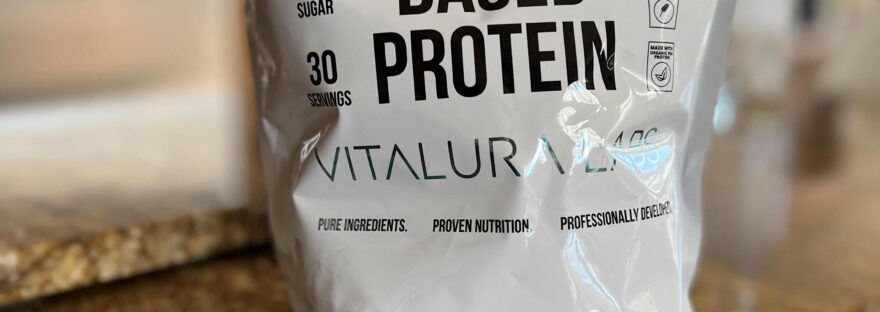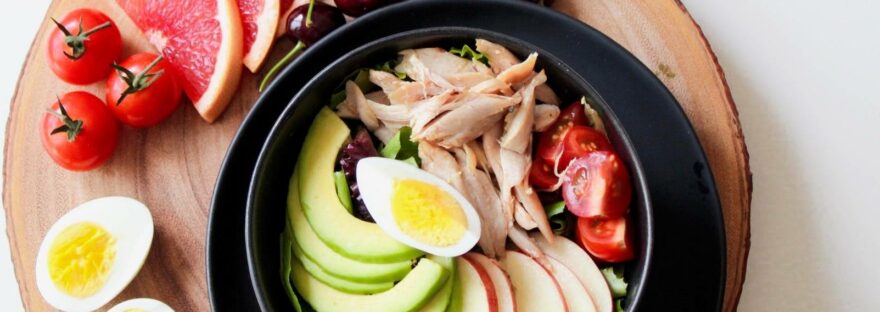I love to workout, but I have always struggled with consuming enough food post-workout to optimize my recovery. I’m a dietitian, I know how important it is, and yet more often than not I’m either skipping my post workout fuel or struggling to make sure I’ve consumed enough to give my body the fuel it needs to rebuild.
Part of the problem for me has always been the taste of protein supplements. Most of them are gross. Especially vegan protein supplements. They’re usually chalky, taste like dirt, or have way too much stevia to try and trick you into thinking you’re eating something that tastes like a dessert.
Enter Vitalura Labs
Anna Victoria, CEO of Fit Body Love Group and NASM certified personal trainer, released a plant-based vegan protein powder this week and being an FBG girl and dietitian, I had to try it. The thoughts below are my own, I paid for my own product.
I did my hamstrings and glutes workout today and for the first time ever I was looking forward to my post workout protein. Not just thinking about what I’d eat to refuel, I was legit looking forward to it. Let me tell you why.
Product breakdown
- Taste- it honestly tastes like the name. I ordered the vanilla gelato flavor and I have never tasted a protein supplement, plant-based or whey, that tastes as good as this flavor tastes. I blended mine with some frozen banana and unsweetened soy milk and topped with rainbow sprinkles. It’s like drinking a vanilla shake post workout. I have a huge sweet tooth and am still shocked that this product has somehow hit that craving for me AND provided nutrition. There are currently two flavors available: vanilla gelato and chocolate gelato.
- Quality- this protein powder is the “cleanest” I’ve seen on the market to date. The ingredients list is short and they’re NSF certified so you know that their product doesn’t have hidden ingredients or missing ingredients. They use organic pea protein and include rice and pumpkin seed protein to make sure you’re getting an optimal amino acid profile. I was nervous when I saw that it has stevia leaf extract, simply because I generally detest the aftertaste of stevia, but this protein powder doesn’t have that weird after taste I’ve come to expect with stevia sweetened products.
- Nutrition- they nailed it. In 1 scoop of powder, you get 100 calories, 0g saturated fat, only 20mg sodium (this is amazing!), 0g added sugar and a whopping 25g protein. Read that sentence again and let it sink in for a moment. That is truly a magical recipe that they’ve created. The majority of protein powders don’t hold a candle to the nutrition punch the new Vitalura Labs protein powder gives you. It’s also plant-based making it acceptable to a wide audience, and when compared to many whey protein products on the market it still reigns supreme in its nutrition profile.
- Cost- some may think that $60 is a lot for a protein supplement. And yes, if it was one of the other brands currently on the market I’d agree with you. But this protein powder is of a superior quality, flavor, texture, and NSF certified. It is 100% worth that $60 price tag. Especially if you consider that there’s 30 servings in every container. That’s $2/serving. I can’t even get a gallon of gas for that cheap.
Final thoughts
If you’re interested in trying Vitalura Labs new plant-based protein powder for yourself, here’s a link to purchase, use code SARAHMILLER for free shipping!
I would definitely recommend this product to anyone looking for a good post workout protein supplement or anyone who has higher protein needs than they’re able to meet through their diet.


